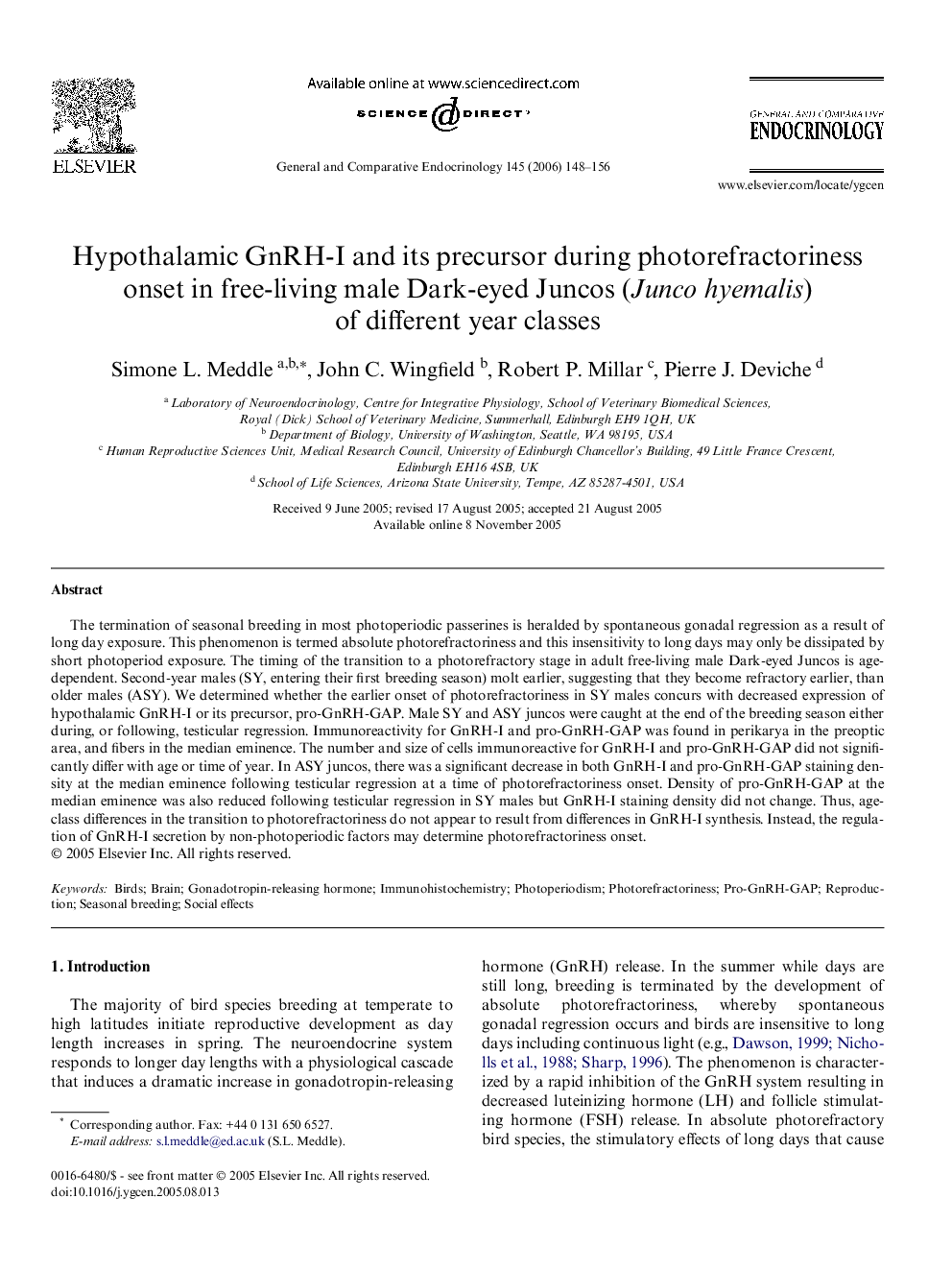| Article ID | Journal | Published Year | Pages | File Type |
|---|---|---|---|---|
| 2802241 | General and Comparative Endocrinology | 2006 | 9 Pages |
The termination of seasonal breeding in most photoperiodic passerines is heralded by spontaneous gonadal regression as a result of long day exposure. This phenomenon is termed absolute photorefractoriness and this insensitivity to long days may only be dissipated by short photoperiod exposure. The timing of the transition to a photorefractory stage in adult free-living male Dark-eyed Juncos is age-dependent. Second-year males (SY, entering their first breeding season) molt earlier, suggesting that they become refractory earlier, than older males (ASY). We determined whether the earlier onset of photorefractoriness in SY males concurs with decreased expression of hypothalamic GnRH-I or its precursor, pro-GnRH-GAP. Male SY and ASY juncos were caught at the end of the breeding season either during, or following, testicular regression. Immunoreactivity for GnRH-I and pro-GnRH-GAP was found in perikarya in the preoptic area, and fibers in the median eminence. The number and size of cells immunoreactive for GnRH-I and pro-GnRH-GAP did not significantly differ with age or time of year. In ASY juncos, there was a significant decrease in both GnRH-I and pro-GnRH-GAP staining density at the median eminence following testicular regression at a time of photorefractoriness onset. Density of pro-GnRH-GAP at the median eminence was also reduced following testicular regression in SY males but GnRH-I staining density did not change. Thus, age-class differences in the transition to photorefractoriness do not appear to result from differences in GnRH-I synthesis. Instead, the regulation of GnRH-I secretion by non-photoperiodic factors may determine photorefractoriness onset.
